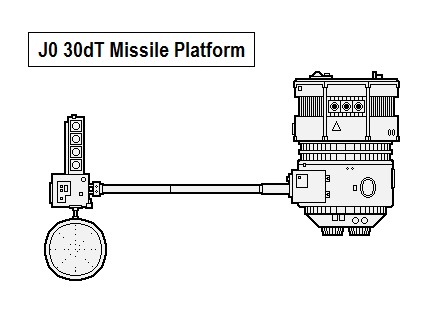Difference between revisions of "Fringian Sensor Buoy"
m |
|||
| (80 intermediate revisions by 2 users not shown) | |||
| Line 1: | Line 1: | ||
| − | + | [[File: Distant Fringe Logo.gif|right]] | |
| − | + | A [[Fringian Sensor Buoy|Sensor Buoy]] is a type of orbital platform utilized within the [[Distant Fringe]] region. | |
| − | + | * It is a specialized type of [[smallcraft]]. | |
| − | + | * Please also see [[AAB]] article: [[Ships of the Distant Fringe]]. | |
| − | |||
| − | |||
| − | |||
| − | |||
| − | |||
| − | |||
| − | |||
| − | |||
| − | |||
| − | |||
| − | |||
| − | |||
| − | |||
| − | |||
| − | * | ||
| − | |||
| − | |||
| − | |||
| − | * | ||
| − | |||
| − | |||
| − | |||
| − | |||
| − | |||
| − | |||
| − | |||
| − | |||
| − | |||
| − | |||
| − | |||
| − | |||
| − | |||
| − | |||
| − | |||
| − | |||
| − | == | + | == Description ([[Specifications]]) == |
| − | + | The term Sensor Buoy is extremely generic but generally indicates a [[Power Plant|powered]] platform, run by its onboard [[computer]]s and equipped with [[Ship Sensor Suite|sensor systems]]. They are placed into stable orbital positions within a [[system]], typically in orbit around secondary [[world]]s, within lagrange points and orbiting [[gas giant]]s. | |
| + | * Sensor Buoys may be deployed in groups. They may use their onboard [[Communications Equipment|commo gear]] to exchange [[Astrogation|navigation]] and [[Ship Sensor Suite|sensor data]]. | ||
| + | * Groups of sensor buoys, in communication with one another and working together against a specific target, exponentially increase their mutual [[Ship Sensor Suite|sensor detection]] capability. | ||
| + | * Sensor buoys are often armed. | ||
| − | === | + | === Selected Example Classes === |
| − | + | ''[[Satellites]]:'' | |
| − | * | + | * [[Type W class Orbital Facility]] |
| − | * | + | ** [[Comstar class Commo Satellite|''Comstar'' class Commo Satellite]] |
| + | ** [[Sanctuary class Sensor Buoy|''Sanctuary'' class Sensor Buoy]] | ||
| + | ** [[Sentinel class Missile Platform|''Sentinel'' class Missile Platform]] | ||
| − | == History == | + | == History & Background ([[Dossier]]) == |
| − | + | Sensor Buoys may include emergency facilities for spacefarers in distress. They are generally unmanned though many do have limited crew facilities. They may be visited by maintenance and supply teams on an occasional basis. | |
| − | + | Sensor Buoys may be utilized in a variety of roles, including [[Astrogation|navigation]], defense, [[Communications Equipment|communications]], resource exploration, and a wide variety of [[Science|scientific research]]. The onboard [[Ship Sensor Suite|sensor suite]]s may include specialized instruments suitable for the task. | |
| − | + | === Image Repository === | |
| + | [[File:J0 30dT Missile Platform.jpg]] <br>A ''Sentinel'' class Missile Platform. | ||
| − | == References & Contributors | + | == References & Contributors ([[Sources]]) == |
{{Intermediate}} | {{Intermediate}} | ||
{{Detail}} | {{Detail}} | ||
{{Sources | {{Sources | ||
| − | | | + | |S2= [[Traveller Wiki Editorial Team]] |
| − | | | + | |S3= Author & Contributor: Lord (Marquis) and Master Scout Emeritus [[Adie Alegoric Stewart]] of the [[IISS]] |
| − | | | + | |S4= Author & Contributor: Lord (Marquis) and Master of Sophontology [[Maksim-Smelchak]] of the [[Ministry of Science]] |
| − | |||
| − | |||
}} | }} | ||
| − | {{LEA | + | {{LEA|Distant Fringe|Satellite}} |
Latest revision as of 20:12, 17 April 2019
A Sensor Buoy is a type of orbital platform utilized within the Distant Fringe region.
- It is a specialized type of smallcraft.
- Please also see AAB article: Ships of the Distant Fringe.
Description (Specifications)[edit]
The term Sensor Buoy is extremely generic but generally indicates a powered platform, run by its onboard computers and equipped with sensor systems. They are placed into stable orbital positions within a system, typically in orbit around secondary worlds, within lagrange points and orbiting gas giants.
- Sensor Buoys may be deployed in groups. They may use their onboard commo gear to exchange navigation and sensor data.
- Groups of sensor buoys, in communication with one another and working together against a specific target, exponentially increase their mutual sensor detection capability.
- Sensor buoys are often armed.
Selected Example Classes[edit]
History & Background (Dossier)[edit]
Sensor Buoys may include emergency facilities for spacefarers in distress. They are generally unmanned though many do have limited crew facilities. They may be visited by maintenance and supply teams on an occasional basis.
Sensor Buoys may be utilized in a variety of roles, including navigation, defense, communications, resource exploration, and a wide variety of scientific research. The onboard sensor suites may include specialized instruments suitable for the task.
Image Repository[edit]

A Sentinel class Missile Platform.
References & Contributors (Sources)[edit]
| This article is missing content for one or more detailed sections. Additional details are required to complete the article. You can help the Traveller Wiki by expanding it. |
- Traveller Wiki Editorial Team
- Author & Contributor: Lord (Marquis) and Master Scout Emeritus Adie Alegoric Stewart of the IISS
- Author & Contributor: Lord (Marquis) and Master of Sophontology Maksim-Smelchak of the Ministry of Science
